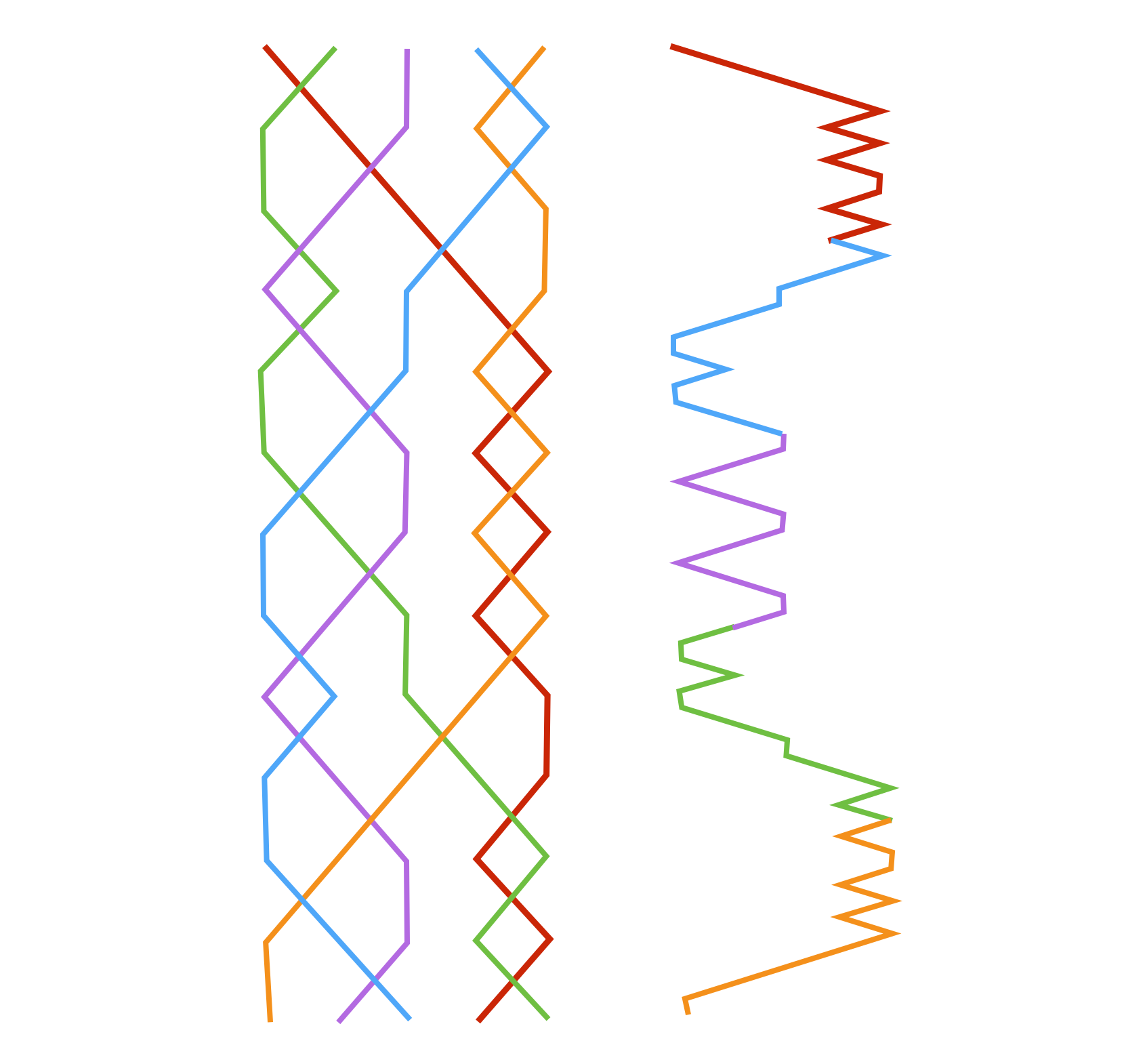
Stedman
- Named after Fabian Stedman, who is credited with its invention and was certainly the first person write it down, Stedman is the most commonly rung principles in the repertoire.
- Unlike methods… a principle has no fixed treble, so all the bells are working bells.
- Stedman is both simple and very tricky…. because there are no reference points to help you put yourself right – yet lots of places to trip up!
- It is very flexible in terms of ringing lengths and compositions and is also capable of producing excellent music, so is therefore a very popular choice for service touches as well as peals and quarters.
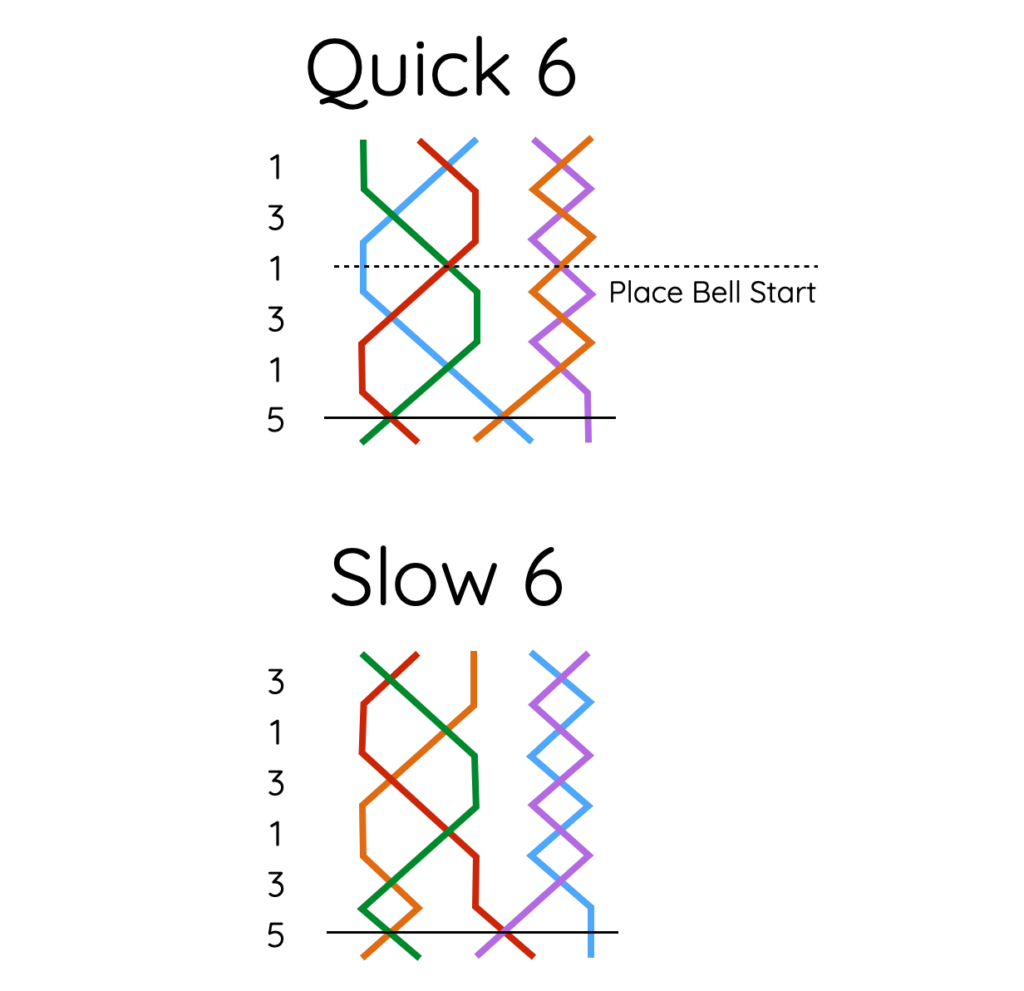
The Structure
- Stedman is constructed using two six change units.
- These are generally known as quick and slow sixes.
- They are rung alternately to provide 12 change blocks.
- Stedman is based on 2 blocks per working bell, one slow and one quick….
- Singles… has 36 changes (3 blocks)
- Doubles… has 60 changes (5 blocks)
- Triples… has 84 changes (7 blocks)
- Cinques… has 108 changes (9 blocks)
- Strangely however… all the starting positions occur in the middle of the quick six, after the quick bells symmetry point!
- The brilliance of Stedman is that the place notation is the same, however many bells are rung… 1,3,1,3,n & 3,1,3,1,n. (n being the highest number).
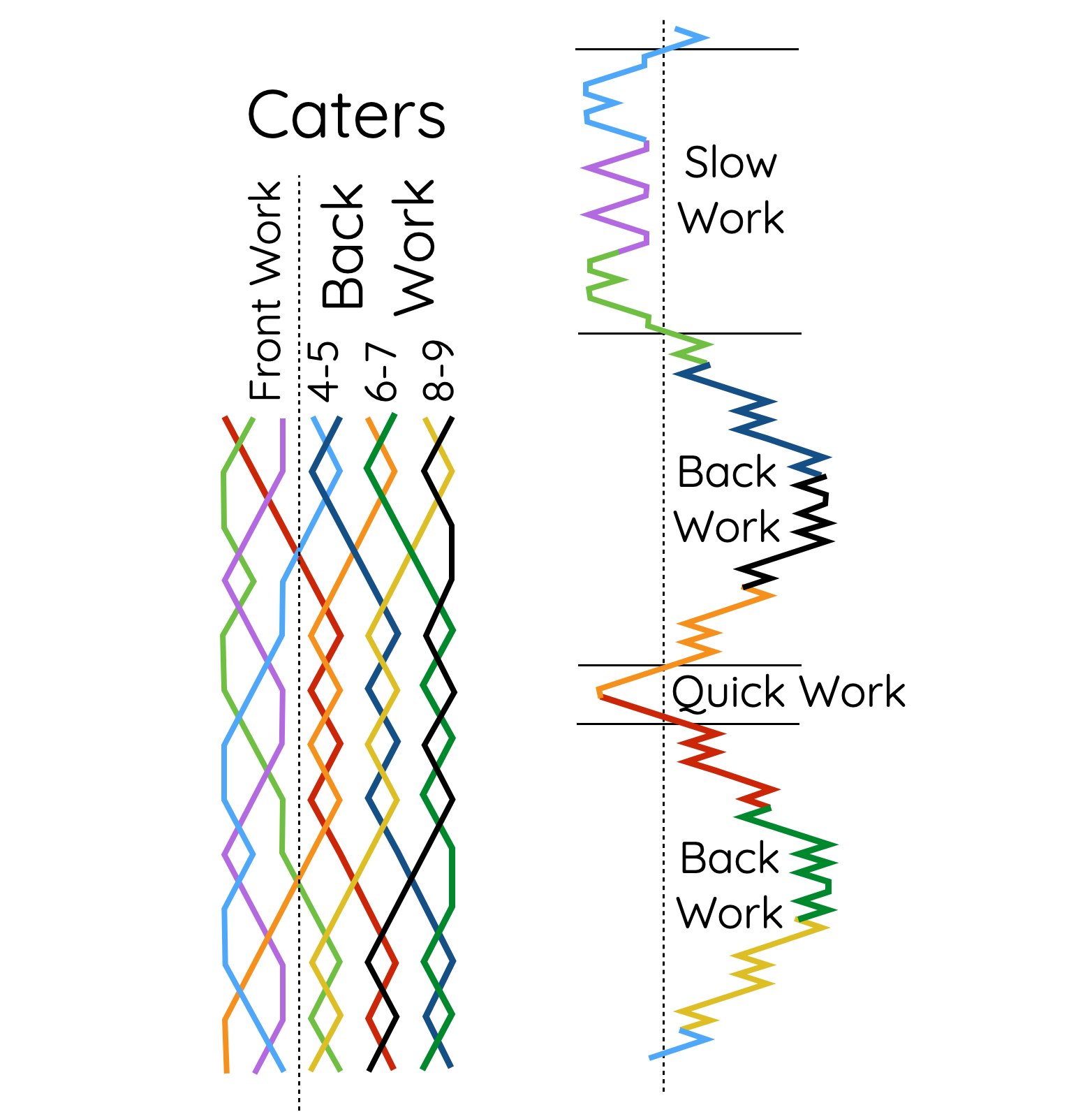
Circle of Work
- The work circle is the same for all stages (doubles, triples, etc.).
- The quick and slow work are also exactly same…
- The only difference is the length of the back work as extra double dodges are added for each higher stage.
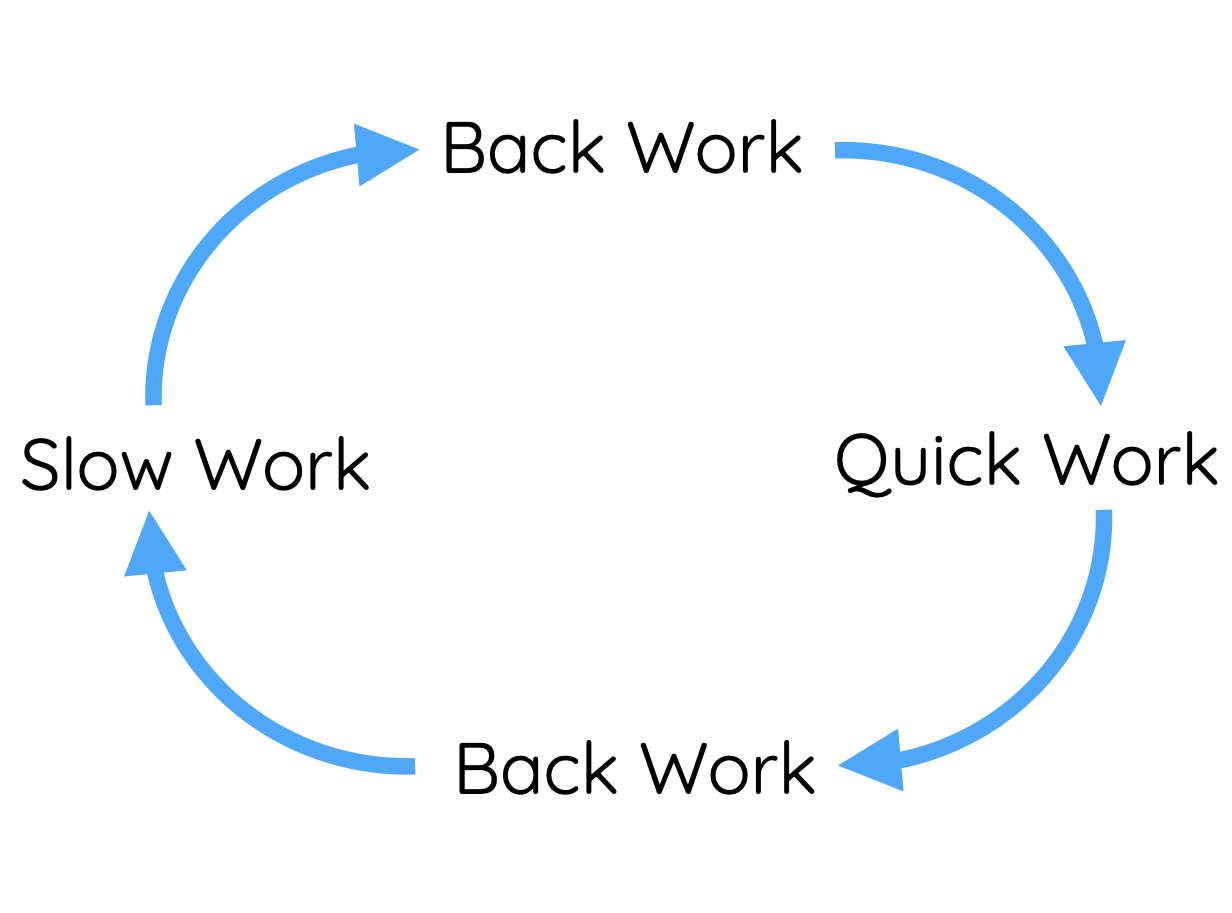

Front Work
- The front work only involves the first three places… and all stages of Stedman are similar.
- There are two parts to the front work… and if we examine them, the terms quick and slow start to make sense…
- The quick work lasts for just 1 six. (6 changes)
- The slow work lasts for 5 sixes. (30 changes).
- A different bell will be quick in each quick six.
- Slow bells always start and finish on a slow six… but their passage through will also traverse a third slow six and the two quick sixes in-between. This means there are always 2 slow bells passing through every quick six and three in every slow six.
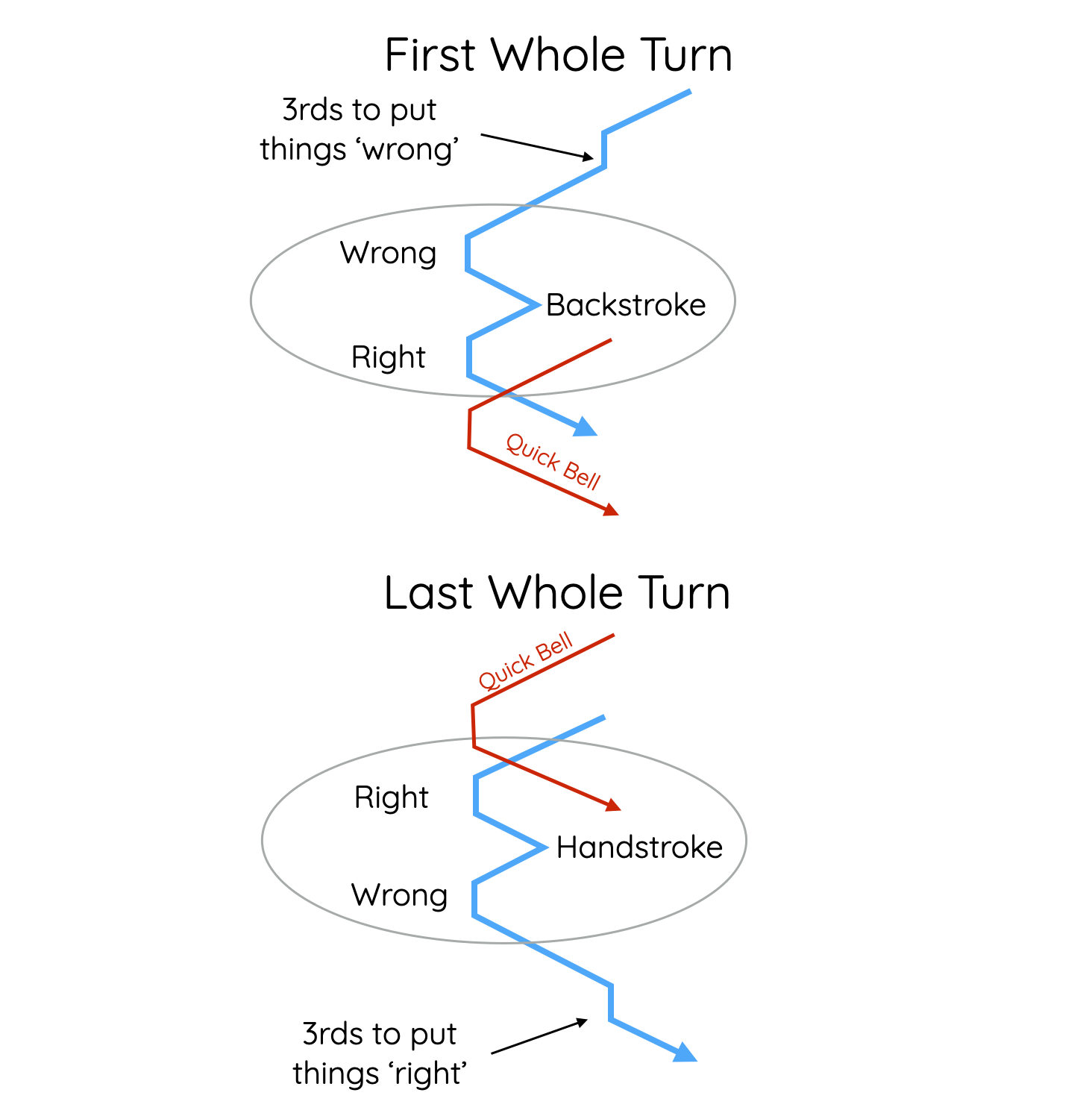
Whole Turns
- This is the term used to describe the lead-point-lead figure at the beginning and end of the slow work.
- The first ‘whole turn’ is at the beginning of the slow work. It involves leading ‘wrong’ (back/hand) and then ‘right’ (hand/back).
- The last whole turn is at the end of the slow work and involves the exact opposite… ringing a ‘right’ lead and then a ‘wrong’ lead.
- All the back work is ‘right’ so we make thirds before the first whole turn to put things ‘wrong’… and again after the last whole turn to put things ‘right’ again ready for more back work.
- In between each lead is a point… a single blow in seconds. The ‘first whole turn’ point is at back stroke and the ‘last whole turn’ point is at hand stroke.
- A quick bell leads immediately after the first whole turn and again just before the last whole turn.
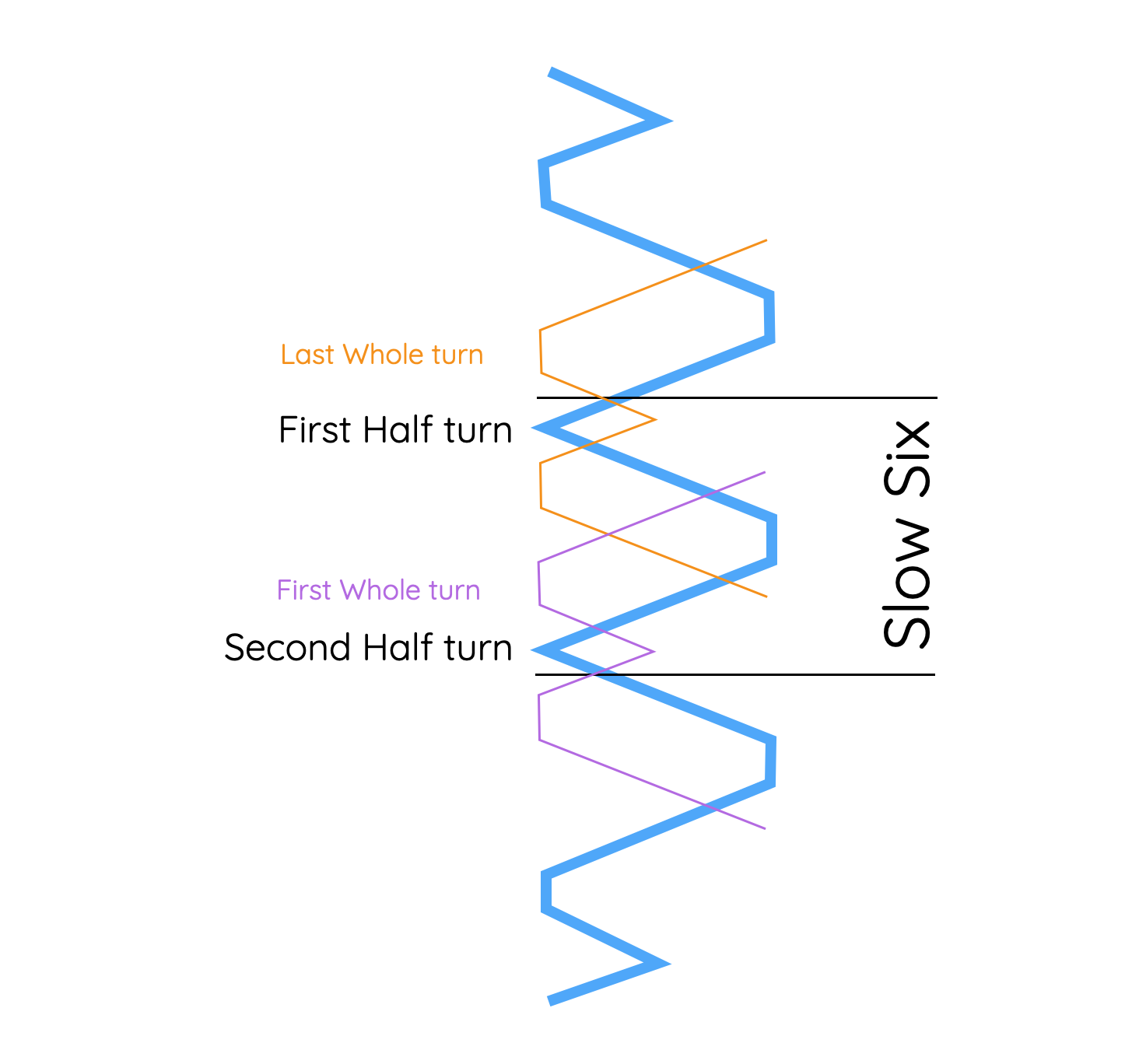
Half Turns
- The central portion of the slow work consists of two ‘half-turn’ point leads. i.e. only half a lead!
- Each half-turn is preceded and followed by hunting to thirds and back – much like in Grandsire.
- The first ‘half turn’ is at hand stroke and will fit into the middle of a ‘last whole turn’.
- The second ‘half turn’ point is at back stroke and will fit into the middle of a ‘first whole turn’.
- Both occur in the same slow six… at the very beginning and end.
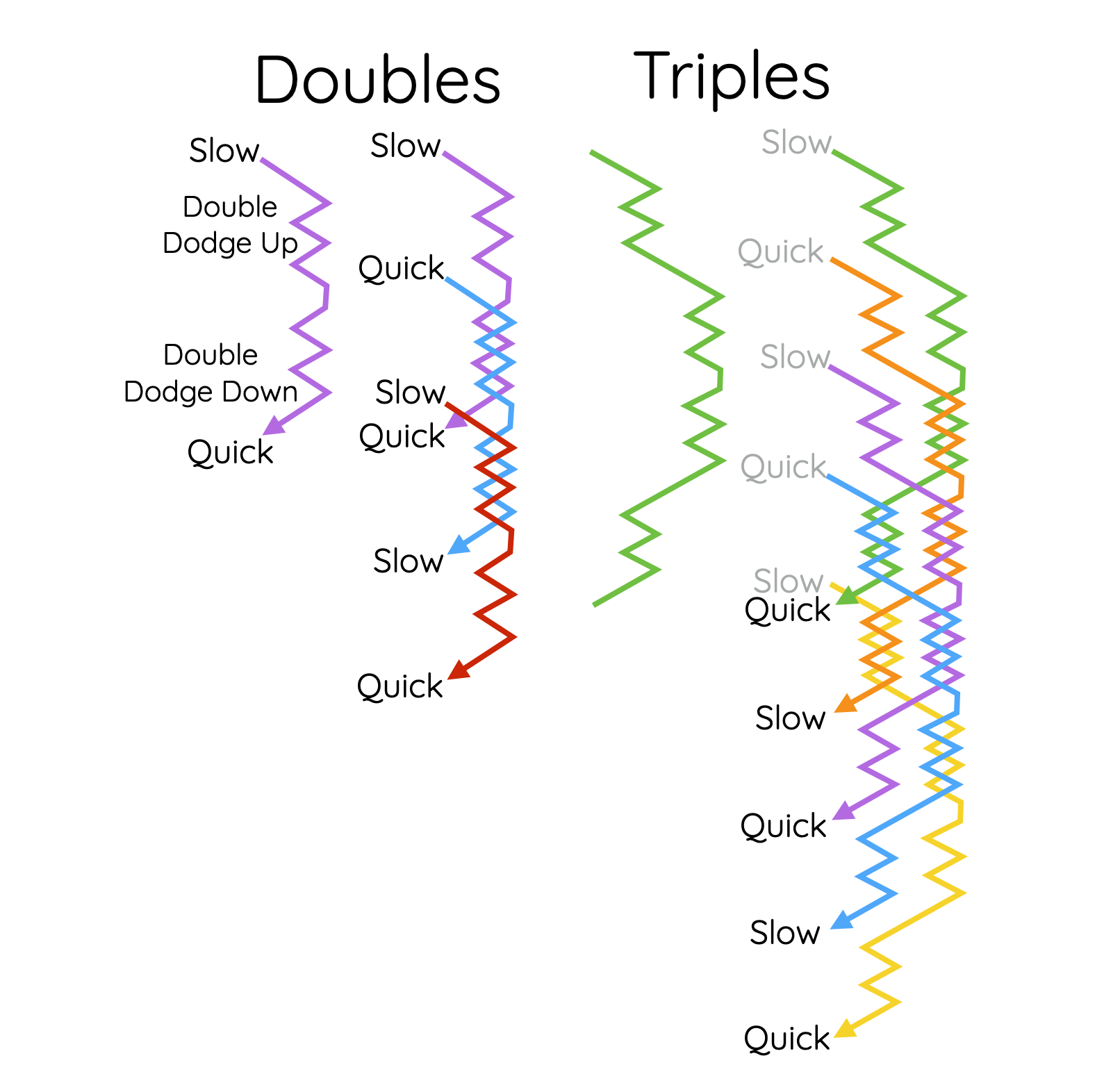
Back Work
- Stedman back work is very simple and involves double dodging up and down.
- The back work is done twice and separates the quick and slow front works.
- Unlike the front work… all the back work is ‘right’ with all the positions arising as per standard hunting.
- For higher number ringing, more subsequent double dodges are added.
- Doubles 4-5 only
- Triples 4-5 and 6-7.
- Caters 4-5, 6-7 and 8-9.
- In singles, there is only front work… the back work disappears completely.
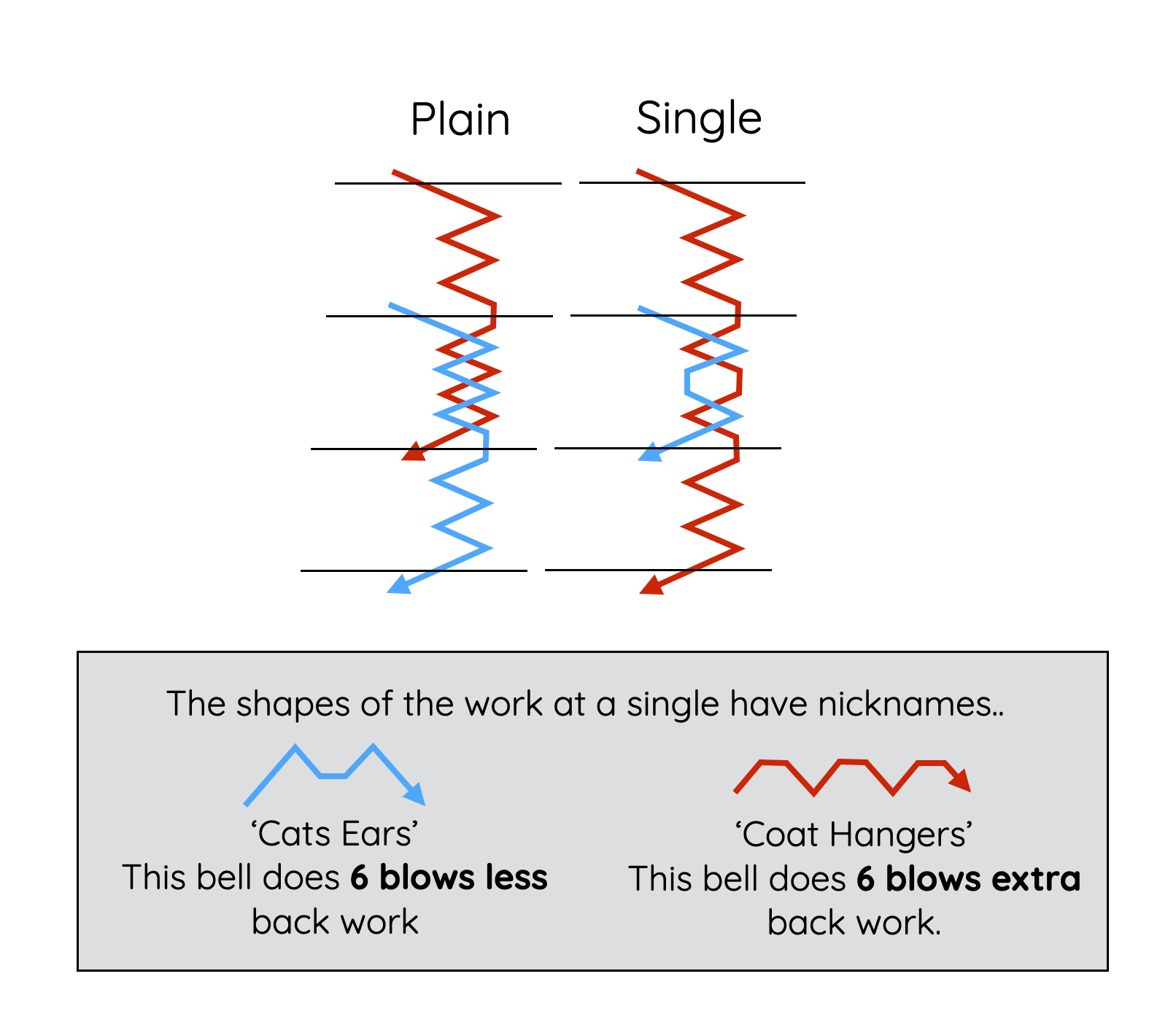
Bobs and Singles - Doubles
- Bobs and Singles only affect back work bells… so there are none in Stedman Singles.
- With only 2 back work bells, only Singles can be added to Doubles.
- All other stages can have both Bobs and Singles. These always occur in the back three places.
- Singles occur at the mid point of any six… quick or slow…
- The net result of a single is that the two back work bells swap positions, meaning that both will repeat the previous front work.
- i.e. If you come out quick, you also go back quick or back slow if you come out slow.
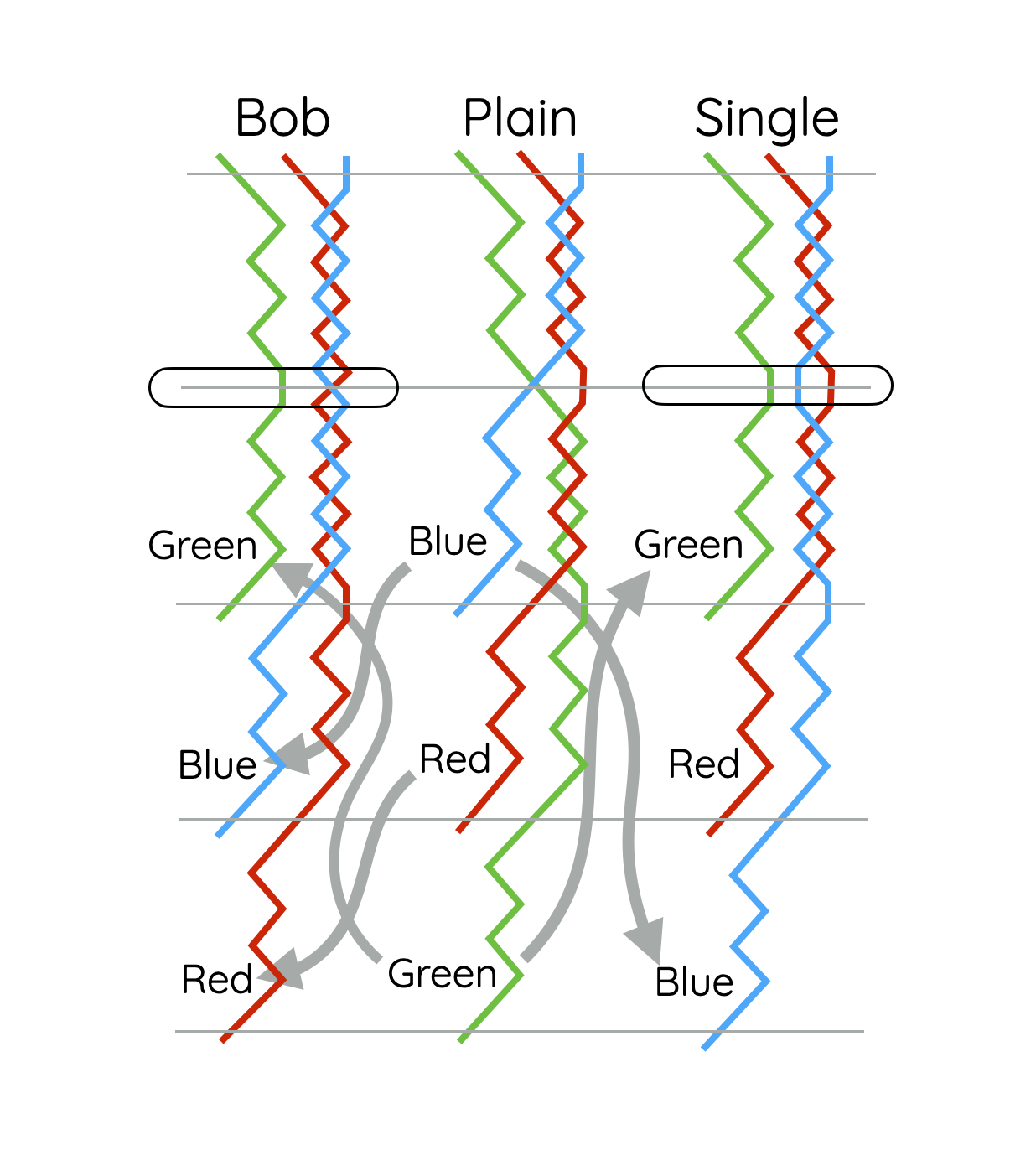
Bobs and Singles - Triples and Beyond
- Unlike doubles, the calls happen at the six ends… Quick or slow.
- With both calls, the bell about to move to the very back ‘makes the bob’. This means it immediately turns around and dodges down. It never gets to the back.
- At a Bob, both the back bells repeat the last six… this means they effectively dodge an extra three times.
- Both back bells will go back the way they came… i.e. quick out will be quick in.
- At a Single, the ‘up’ bell at the back is not affected.
- The bell completing the back place dodges, will restart all the back dodges, delaying it by 2 sixes.
- With no call, the bells arrive and leave the back work in the same order. In this case, Blue, Red, Green…
- At a Bob, the order the bells come back down changes – Green, Blue Red… delaying blue and red by one six and advancing green by two sixes.
- At a Single, the Red bell maintains its position and is unaffected, but the Green and Blue swap places. Hence a ‘single’ pair switching.
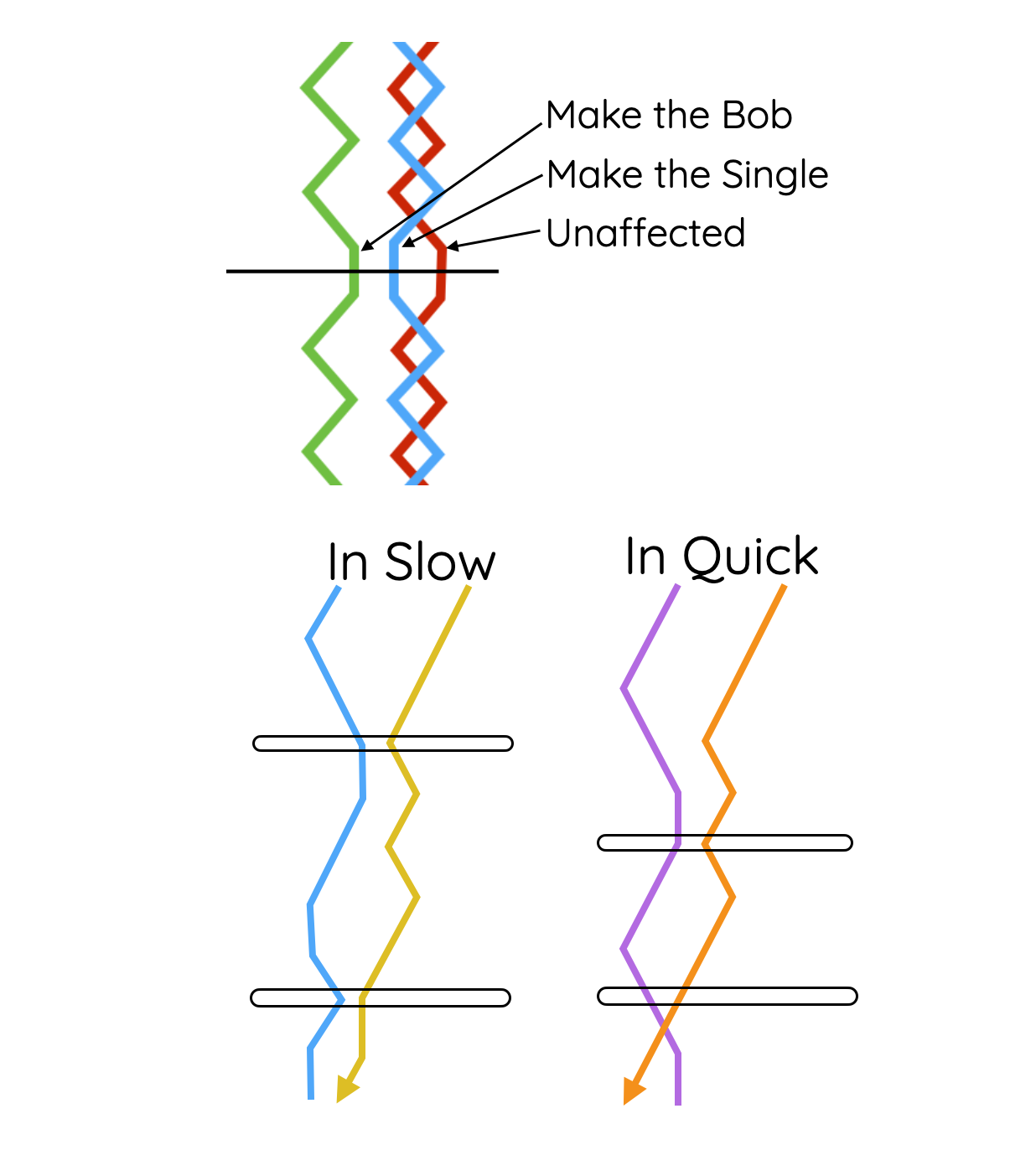
Tips for Touches
- If you have to ring a Bob, remember each triple dodge changes your next front work from quick to slow or vice versa. Remember to count the calls which add extra dodges… There may be more than one and they might not be consecutive!
- A Single or ‘making the Bob’ have no effect on quick/slow polarity.
- At a single, the bell making the single will make two blows over the bell making the Bob and the unaffected bell will make its two blows over the bell making the single…
- If you lose count or are not sure whether you are quick or slow… note who you meet at your 1st blow in 3rds:
- If you met them at the first 4-5 down dodge, you are a slow bell.
- !f you met them at the second 4-5 down dodge, you are a quick bell.

Keeping it right....
- Keeping Stedman right is extremely challenging as there are few indicators to help fix mistakes… but with some careful thought and learning, we can all do a certain amount to help…
- The most likely place for mistakes to occur is in the slow work or in the transition from back to front work.
- Remember that there are always 3 people doing front work at any time, so if you understand how thing work, then you can help support others who are in a muddle!
- To ring Stedman successfully, everyone has to take on a degree of this responsibility!
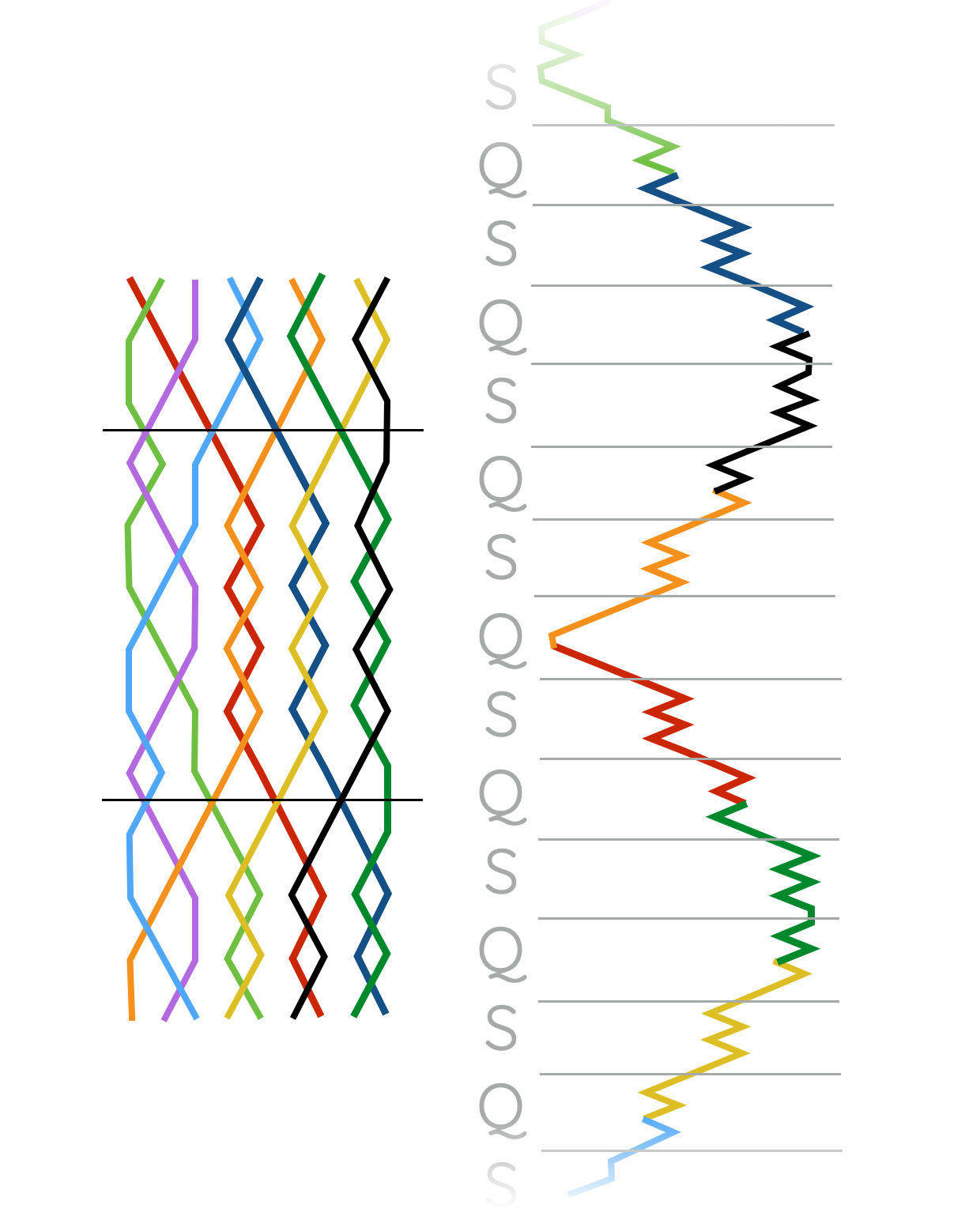
Keeping it right....
- The back work should be much simpler to monitor and ring.
- The double dodges all align perfectly with the sixes, so moving from one to another is always done at the transition from slow to quick.
- It is therefore easy to count quick and slow sixes, even when at the back.
- Just like methods and lead ends… the new six starts at a hand stroke.
- Remember, that place bells are less relevant to Stedman as they always end 4 blows into a quick six!
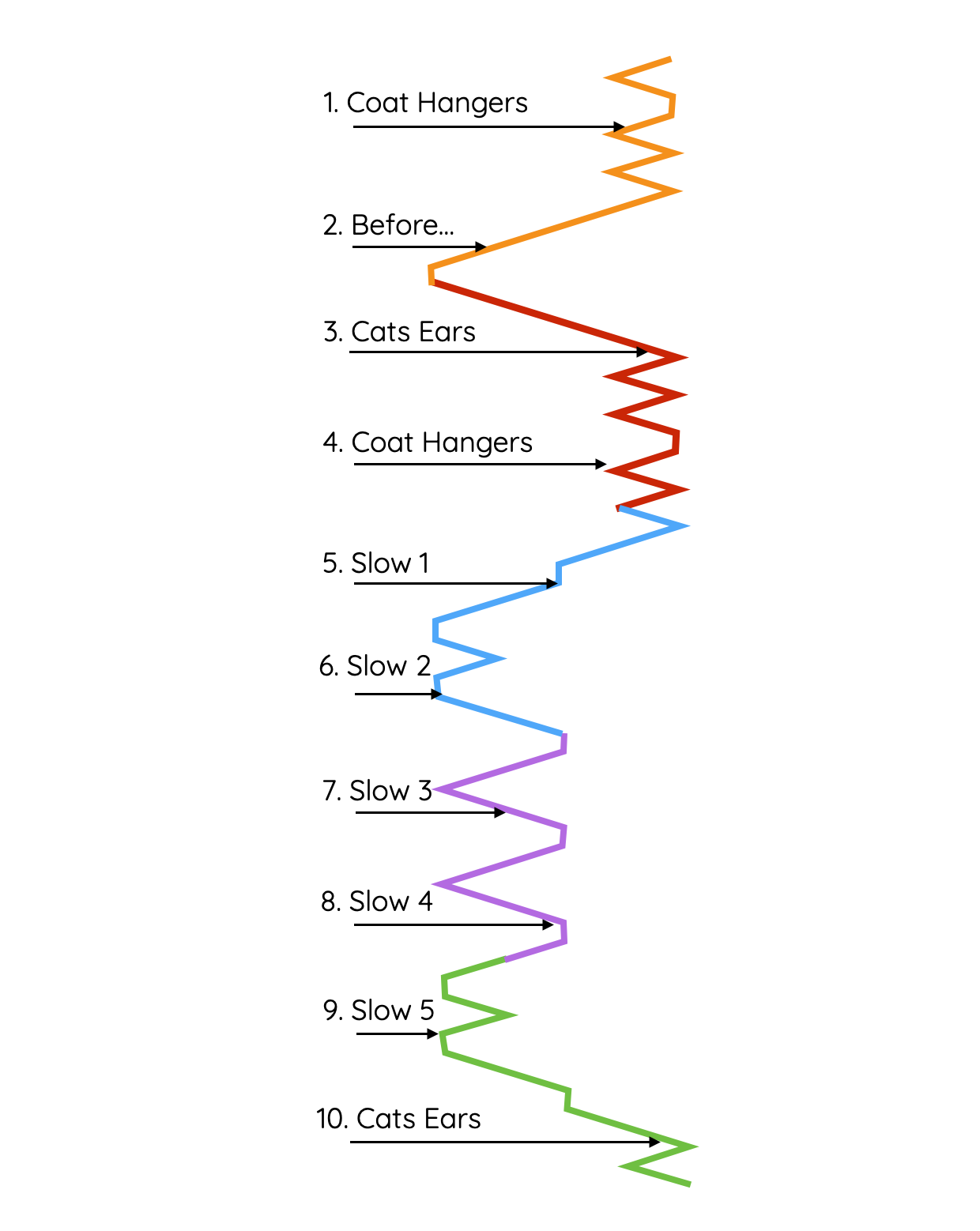
Doubles Calling Positions
- The simplest calls are made to switch yourself with another bell… this can be done 4 times:
- twice at the first backstroke in 5ths (to make Cats Ears)
- twice at the backstroke after lying… (to do Coathangers)
- The other 6 positions are all unaffected and are used to switch other pairs of bells….
- The simplest is seconds place before leading quick… (so just like a ‘before’ call in methods).
- The other 5 are in the slow work:
- Backstroke thirds at the start.
- Back stroke lead at the and of the first full turn.
- Back stroke after the first half turn.
- Back stroke thirds after the second half turn.
- Backstroke lead after the point in in the last whole turn.
- The other 5 are in the slow work:
Doubles Touches
- This is a list of all the possible ‘true’ touches of Stedman Doubles.
- The singles are called with respect to the sixes, so could be applied to any bell if you are happy to count..
- For the tenor… position 3 and 6 equate to:
- At the beginning of the back work after coming out quick (make cats ears).
- At the back… ( make coat hangers)
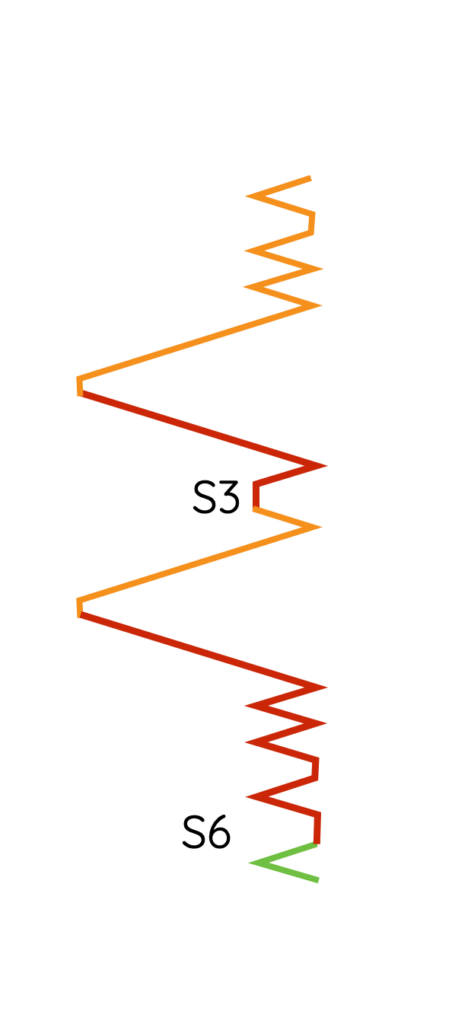
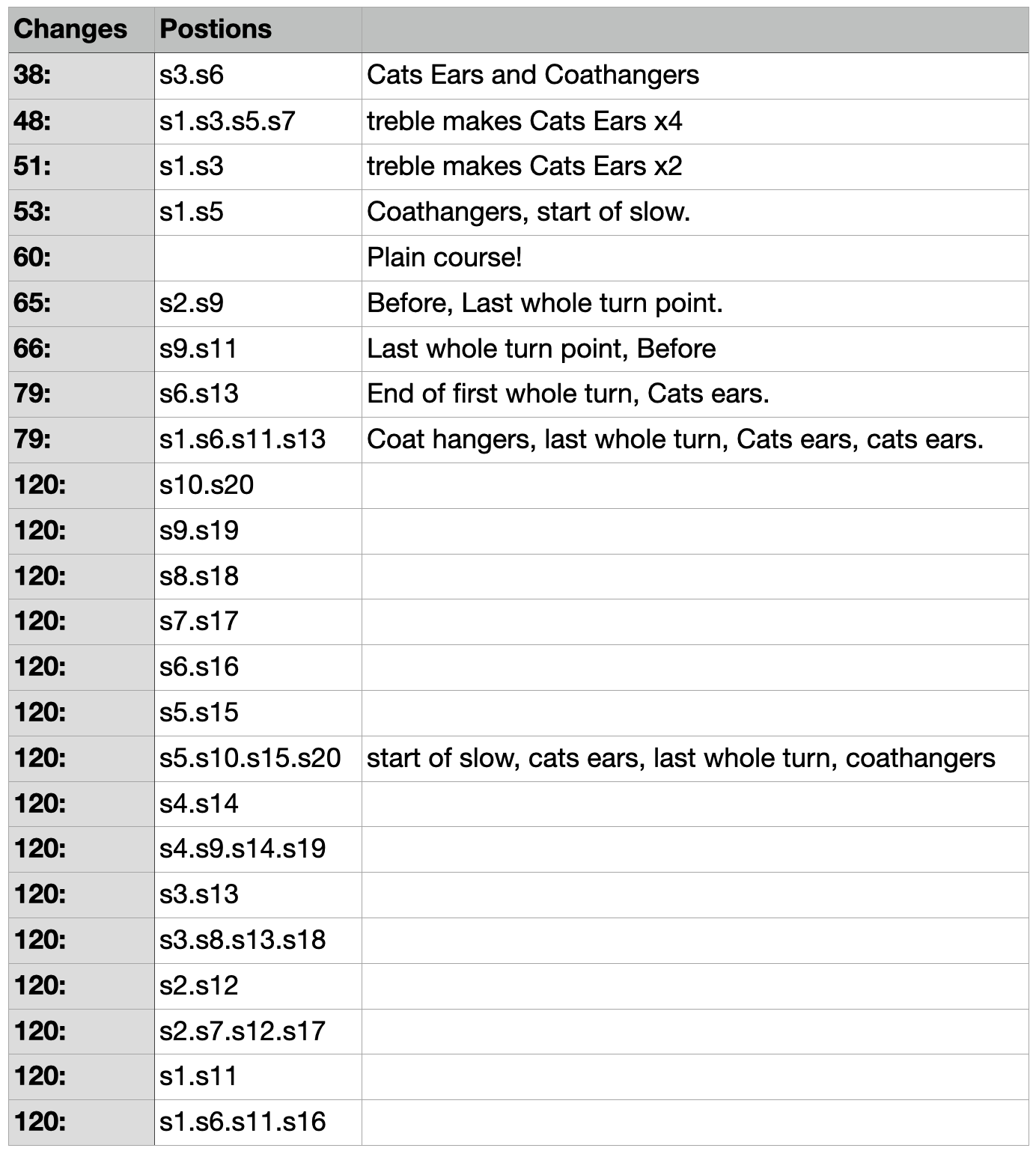

Calling on higher numbers
- This is a list of all the possible ‘true’ touches of Stedman Doubles.
- The singles are called with respect to the sixes, so could be applied to any bell if you are happy to count..
- For the tenor… position 3 and 6 equate to:
- At the beginning of the back work after coming out quick (make cats ears).
- At the back… ( make coat hangers)
- The 5 Slow calls as follows:
- First hand stroke lead of the first whole turn.
- hand stroke (3rds) after the first whole turn.
- hand stroke (2nds) before the second half turn.
- hand stroke (2nds) at the beginning of the last whole turn.
- hand stroke (3rds) after the last whole turn.
- The 5 Slow calls as follows:

Doubles Numbered Positions
- Because there are calling positions every 6 changes and the back work ones appear the in the same place whether quick or slow… a numbering system is used to help identify where calls go.
- For Doubles, the numbering is relative, so if you are affected, the numbering just continues onwards anyway.
- This means you have to count the sixes… but you can call from any bell!
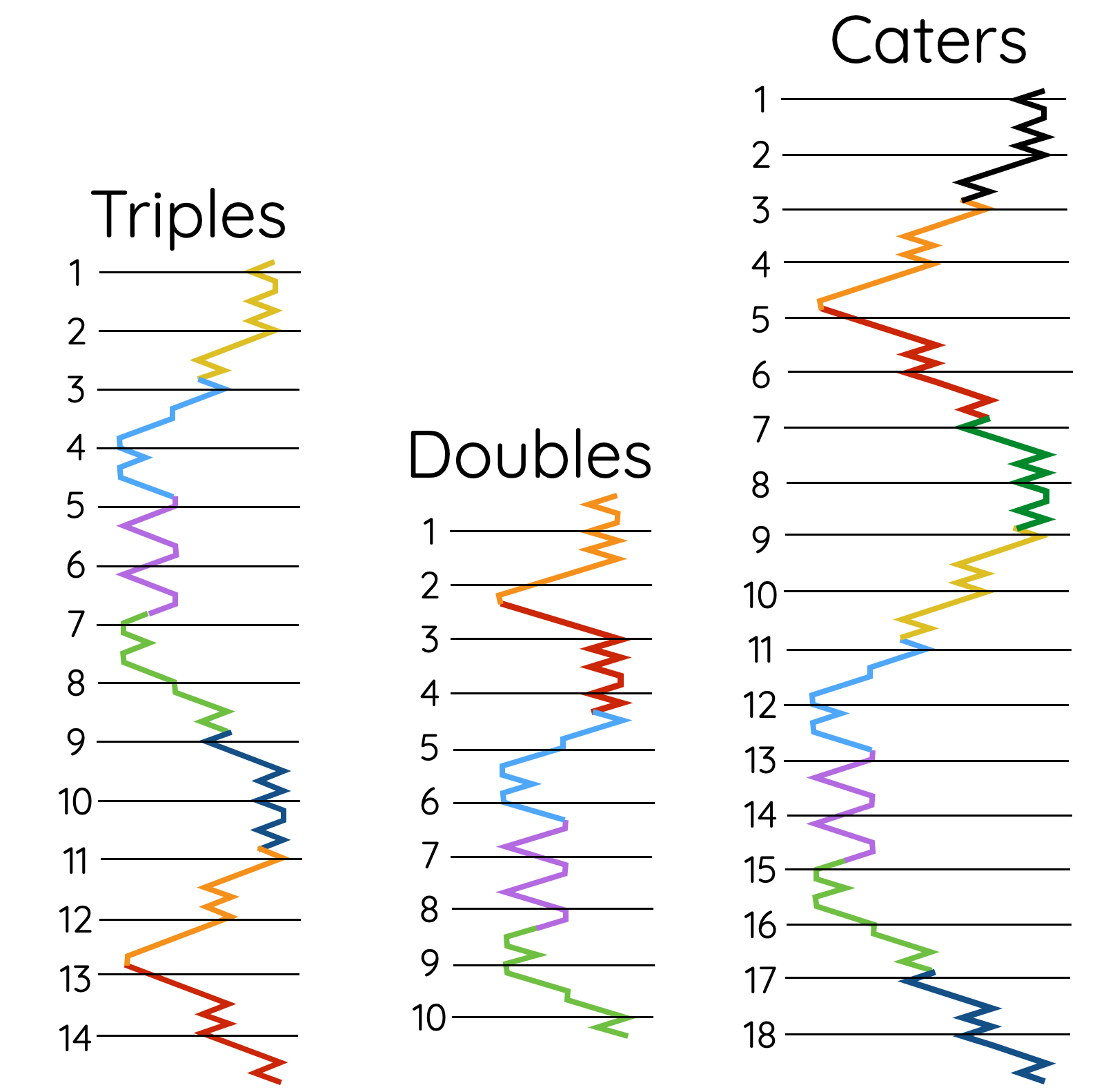
Triples Numbered Positions
- Because there are calling positions every 6 changes and the back work ones appear in the same place whether quick or slow… a numbering system is used to help identify where calls go.
- For Triples the numbering starts from the tenors starting position and is absolute. So if you are affected, you will jump from one number to another.
- For all other stages, the numbering is relative, so if you are affected, the numbering just continues onwards anyway.
If you want to know more… take at look at both Blue Line and the CCBR Library.
- ART offer a number of worksheets in their Toolbox series. The Stedman one is definitely worth a look…
- John Harrison’s notes of an Oxford DG Training course are very comprehensive.
